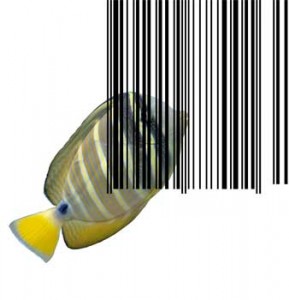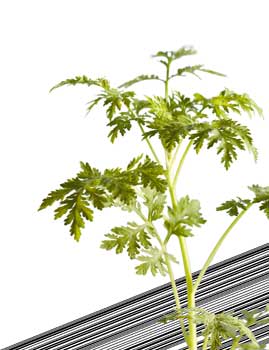
Eduardo CesarThe method has been shown to be useful in the identification of fish and in comparing communities of species from different basinsEduardo Cesar
Imagine a world in which you can know the name of any animal, any plant, any fungus, any organism, then and there, in a flash, anywhere on Earth. That is what the introduction leaflet of the International Barcode of Life Project (iBOL) promises. The project is headquartered at Guelph University, Canada, and it was the proposal that Paul Hebert, iBOL’s scientific director, brought to the International Symposium on DNA Barcoding at the Biota-FAPESP program, held on December 4 and 5.
Hebert is known as the “inventor” of the DNA barcodes, short segments with about 650 pairs of bases of the mitochondrial genome that allow one to distinguish different species. In the symposium’s opening talk, the researcher showed how a database available on the Web and integrating genetic and environmental information can catalogue and identify all the biological diversity on our planet. Brazil, the home of an enviable biological diversity, is a partner much sought after by international initiatives such as IBOL and CBOL (Consortium for the Barcode of Life), so much so that David Schindell, the consortium’s executive secretary, came all the way from Washington to deliver his talk, returning on the same day.
However, the Brazilian researchers at the event demonstrated that the collaboration will not be limited to sending samples of genetic material abroad. David Oren, a researcher at the Museu Paraense Emilio Goeldi, museum and research institution, and biodiversity coordinator of the Geoma network, which brings together several institutes of the Ministry of Science and Technology, stressed the need to set up a national barcoding program while also depositing native biodiversity specimens with the Brazilian museums. “We cannot miss this opportunity,” he said. It is because of the lack of a central organization capable of bringing together the efforts of various parties that Brazil, despite its biological wealth, only ranks 11th among the countries that supply data for BOLD, the International Barcode of Life Data Systems.
Besides the lack of any national coordination, the inventory process in Brazil is likely to be infinitely more labor intensive than in Canada. Botanist Alberto Vicentini, from INPA (the National Research Institute of the Amazon) used a tiny segment of the Amazon Rainforest as an example: the Ducke reservation, near Manaus, one of the Amazon Region’s best known areas. In 1990, it was estimated that it held some 825 species of vascular plants – trees and bushes. With the ongoing work of taking inventory, by 1994 this figure had risen to 1,199 and by 1999, to 2,175. In other words, the figure increased by a factor of almost three in one decade. The flora surveys take a long time not only because of the huge diversity, but also because little is known about it. The result is piles of samples with no experts capable of identifying them. According to Vicentini, sequencing the barcode and drawing up a diagram of the relations between these trees would not solve the problem, since the plants would continue to be nameless. “The Amazon Region is an area of continental size, with huge diversity and probably a lot of recent diversification, with insufficient molecular variations for one to distinguish the species,” he said.
However, it is a start. The barcode helps one to sift through the variety and to classify it in some way. The more diversity is represented and identified in the database, the faster the inventory process advances. Possible uses of the technique extend far beyond cataloguing diversity. Foreign and Brazilian researchers who presented their results at the symposium showed that the method is innovative and important as a start to studies of evolution and ecology: deducing when the species arose and whether they are long-lasting, comparing diversity among areas, etc.
Geneticist Fabrício Santos, from the Federal University of Minas Gerais (UFMG), was one of the first researchers to take part in the CBOL international consortium and to insert data into BOLD. In 2006, his group showed that the DNA barcode is effective in terms of identifying birds from the tropics. When the method fails, it is because there are classification problems that need to be solved through more detailed studies. In a quick description of how he has been employing this technique, he showed that it is also possible to distinguish the five species of marine turtles found on the Brazilian coast, as described in an article in a 2009 issue of Genetics and Molecular Biology. Furthermore, in a study on bats published in 2008 in Molecular Physiology and Evolution, the group from Minas Gerais found cases of hidden species, where two or more species are mistakenly considered to be just one. The method has proven to be equally useful to identify fish and compare the communities of species from different basins, as demonstrated by Claudio Oliveira, from Paulista State University (Unesp) at Botucatu, and frogs, according to a pilot project conducted by Mariana Lyra, from the State University of Campinas (Unicamp).

Miguel BoyayanBiodiversity makes Brazil a partner that international cataloguing initiatives seekMiguel Boyayan
Coexistence
A good example of environmental application comes from the lab of Eduardo Eizirik, from PUC/RS (the Pontifical Catholic University of Rio Grande do Sul). To understand the coexistence of two species of wildcats in the central part of Rio Grande do Sul State (see Pesquisa FAPESP issue 159), his team has been attempting, along with rodent experts, to identify the species found within the stomach of felines. The task has now become far easier thanks to genetic markers. For the time being, the data has confirmed the suspicion that each species of wildcat feeds on different prey, i.e., rodents that are not of the same species. The results were also surprising for the rat experts, producing the DNA of species that are not in the database. The wildcats probably know small mammal fauna better than human experts do.
Providing an example that is closer to non-academic daily life, geneticist Cristina Miyaki, from the University of São Paulo (USP) – one of the organizers of the symposium, along with colleagues Mariana Cabral de Oliveira and Lúcia Lohmann from the same institute -showed a police case. In 2003, a man was detained at the Recife airport wearing, under his shirt, rolls made out of women’s stockings, full of eggs that he declared were quails’ eggs. Unconvinced, the police pursued the investigation further and asked for help from an expert at USP. It turned out the eggs contained 50 embryos, which Cristina’s team identified as being of the blue and gold macaw (Ara ararauna), of the blue-bellied parrot (Triclaria malachitacea), of the yellow-faced parrot (Alipiopsitta xanthops), and parrots of the complex Amazona aestiva/Amazona ochrocephala. Luckily for the trafficker, none of these species are under the threat of extinction, which enabled him to go free after being held for a few days and paying a fine.
Prejudice
The symposium provided a quick tour of the immense wealth that might be revealed through a more systematic use of barcodes in Brazil. However, the employment of this genomic tool is still subject to prejudice. Some researchers do not believe that analyzing genetic sequences will work the way that Paul Heber, the iBOL scientific director, promises, without more in-depth knowledge of the biology of the organisms. “Will the barcodes help us to delimit what a species is? Are they going to replace the need to name plants?” asked Vicentini, from INPA, in his presentation. Many people disagree, for instance, with the principle that the Canadian scientist uses to determine different species: according to him, a 2% divergence between the analyzed DNA segments would suffice. The idea is not considered realistic because some species harbor a great diversity and yet they operate as a single evolutionary unit. The contrary may be true as well: one may have two species that follow independent evolutionary paths, even though they share very similar genetic material, perhaps because not enough time has gone by for them to accrue a large enough number of differences.
In any event, there appears to be a consensus among the Brazilian researchers that attended the symposium: a lot of progress in knowledge can be achieved if all the experts from several areas come together around this new tool. “One would need broad financing to set up a major center for the investigation of biodiversity through barcodes,” says Vicentini. Such a center might impel the work of taking stock of and naming the elements of Brazilian biodiversity, but it must be tied to the strengthening of taxonomy and of systematics and, above all, to the training of personnel. The molecular barcode can be seen as yet one more tool to help us understand biological diversity, rather than as a replacement of the traditional forms of taxonomy and systematic research,” he advocates.
Republish
